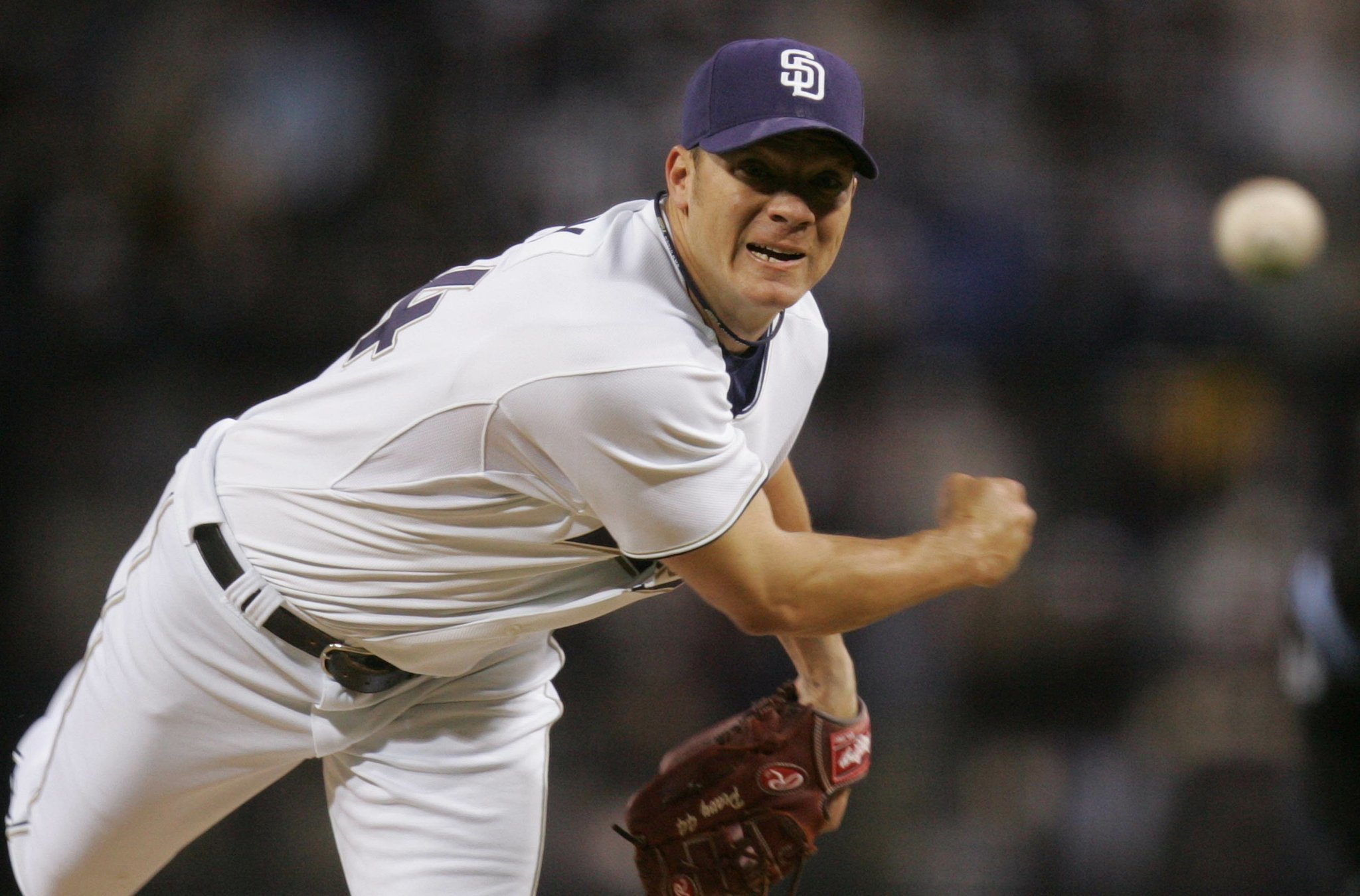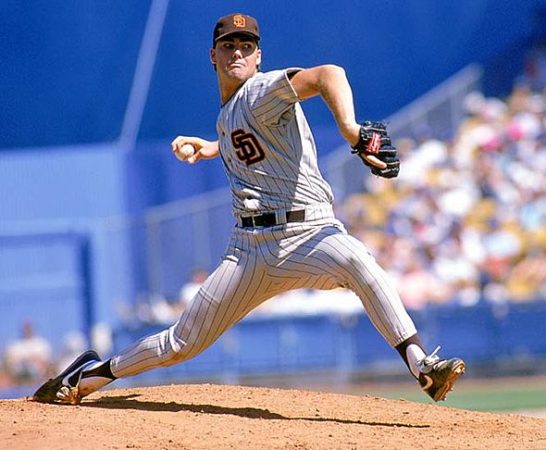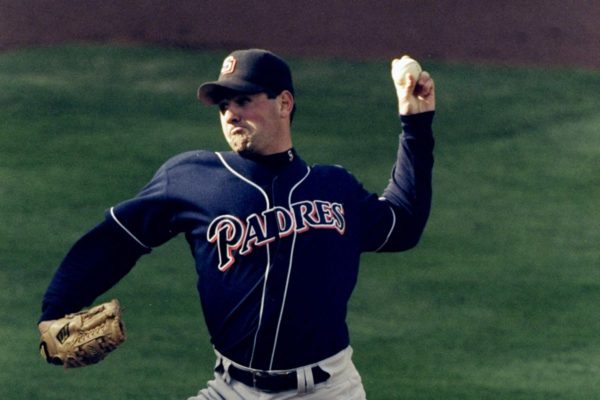An analytical anthology of San Diego Padres’ pitching

Credit: USA Today Sports

A look at the history of the San Diego Padres’ pitching staff.
The San Diego Padres organization has had Hall of Fame-caliber pitching in their history, that’s undeniable.
Some names that come to mind include Trevor Hoffman, Rollie Fingers, and Goose Gossage. There have also been pitchers that are not in that tier but were still elite and productive for the franchise, such as Jake Peavy, Mark Davis, and Eric Show.
With that in mind, this article attempts to compile an anthology of Padres pitching that focuses on the elite and most accomplished pitchers that have played for the team and have been highly productive over varying periods. The criteria that will be used to construct this anthology are:
- Longevity
- Accolades
- General Statistics
- Advanced Analytics
Not all pitchers in franchise history will be included in this anthology. Only those who are the most accomplished in their time with the Padres will be discussed. A small asterisk to this anthology is that some pitchers have pitched in different decades and have had multiple stints with the team.
Randy Jones (1973-1980): In his time with the Padres, Jones is arguably one of the most underrated and prolific pitchers in the National League in that era. A two-time All-Star in 1975 and 1976, Randy Jones pitched 71 complete games in eight years with the organization, where 35.2% of them came in his Cy Young year in 1976, where he led MLB in wins (22), games started (40), complete games (25), and innings pitched (315.1). His effectiveness in his Padres tenure came in limiting home runs, with an HR/9 of 0.56. He also led all of MLB in this category in 1978 (0.21).
Rollie Fingers (1977-1980): One of the many Hall of Fame pitchers that have played for the Padres, Fingers continued his arc as one of the most productive relievers in MLB history with San Diego. An All-Star in 1978 and two-time saves leader in 1977 and 1978, he is one of the preeminent relievers in MLB history, let alone in his four years with San Diego. In 265 games, Fingers posted an ERA of 3.12, a FIP of 2.96, and a SO/9 of 6.7. What made Fingers effective with the Padres is his ability to limit balls in play, posting a BABIP of 0.288 and a batting average against of 0.243.
Gaylord Perry (1978-1979): While only spending two years in San Diego, Gaylord Perry accomplished a lot in a short period, as he won a Cy Young award in 1978 and selected to his fourth All-Star game in 1979. His ERA (2.88) and FIP (2.86) in San Diego were impressive, relative to his peers. In these two years, Perry’s ERA and FIP both ranked third amongst starters who pitched at least 450 innings.

Eric Show (1981-1990): As the franchise’s all-time leader in pitcher wins (100) and member of the 1984 World Series team, Show became a mainstay in the Padres rotation. In his era, Show defined reliability and an innings eater as a starter, as his ERA (3.60), FIP (4.15), and SO/9 (5.3) were all solid across his time in San Diego. His best year statistically occurred in 1988, as he pitched a career-best 13 complete games and 144 strikeouts.
Rich Gossage (1984-1987): Another Hall of Fame pitcher, and part of the 1984 World Series team, Gossage is one of the elite relievers of the 1980s. In his four years in a Padres uniform, he garnered two All-Star selections (1984, 1985). Finishing with 1,502 strikeouts for his career, Gossage put this ability on display in his time with San Diego, as he had a SO% of 20.0% and a SO/9 of 7.3. Like Fingers, Rich Gossage also limited the production of opposing batters, reflected in his batting average against of 0.227 with the franchise.
Mark Davis (1987-1989, 1993-1994): Having two separate stops with San Diego, Davis became highly decorated in a short timeframe, specifically in 1988 and 1989. In these two years with the Padres, Davis amassed two All-Star selections, a Cy Young award (1989), and a Rolaids Relief Award (1989). From 1988 to 1989, Davis posted all-time level numbers, as his SO/9, SO%, BABIP, LOB%, and FIP were 9.1, 25.1%, 0.259, 83.1%, and 2.46 respectfully. While only for a short period, Davis is undoubtedly one of the best closers in the game during his time in San Diego.
Bruce Hurst (1989-1993): An underrated pitcher in Padres’ history, Bruce Hurst is second all-time in franchise history in WHIP (1.181). In his first year with the team in 1989, Hurst led the National League in complete games (10) and followed that up in 1990 by leading MLB in shutouts (4). From 1989 to 1992, Hurst became a highly serviceable player for the franchise. His effectiveness as a Padre is recognized in striking out opposing batters (SO% of 16.6%), limiting walks (BB% of 6.5%), and stranding baserunners (LOB% of 74.3%). Hurst is also skilled at preventing negative outcomes overall in these four years, reflected in a FIP of 3.34.
Andy Benes (1989-1995): Having started his MLB career in San Diego, Benes evolved into a steady rotational piece to the Padres pitching rotation of the 1990s. An All-Star in 1993, Benes followed that honor with a 1994 campaign that ended as the National League leader in strikeouts (189) and SO/9 (9.9). To expand on his strikeout level stuff, from 1989 to 1994, his SO/9, SO%, and SO/BB ratio was 7.34, 19.6%, and 2.55 respectfully. To emphasize his value with the organization, Benes ranks fourth in franchise history in WAR (20.8), finishing above pitchers such as Randy Jones, Eric Show, and Bruce Hurst.

Andy Ashby (1993-1999, 2004): Acquired via trade in 1993 from the Colorado Rockies, Ashby asserted himself as a strong foundational piece in the Padres rotation for several years. Selected to two All-Star games (1998, 1999), Ashby is part of the franchise’s 1998 World Series team, and his output warranted viability as a starter. From 1994 to 1999, his ERA, FIP, and SO/9 with San Diego are 3.49, 3.96, and 6.2 respectfully. In that same timeframe, his ERA+ is 116, meaning his ERA is 16% better over those six years, relative to his peers.
Trevor Hoffman (1993-2008): Considered by many to be the greatest pitcher in franchise history, and one of the best relievers in MLB history, Trevor Hoffman is one of the preeminent faces of the franchise next to Tony Gwynn. Acquired in a trade from the Florida Marlins in 1993, Hoffman spent 15-plus seasons rewriting the record books in San Diego. His Hall of Fame career included seven All-Star selections and two Rolaids Reliever of the Year awards. He is the team’s all-time leader in several pitching categories, including ERA (2.76), WHIP (1.043), and FIP (2.93). He is also second all-time in Major League Baseball in Saves (601), behind Mariano Rivera (652). From 1994 to 2008, Hoffman posted highly impressive numbers to match his Hall of Fame credentials, as his SO%, batting average against, and FIP was a stunning 27.3%, 0.204, and 2.90. Amongst his contemporaries who pitched at least 500 innings in this period, Hoffman ranks first in SO/BB ratio (4.15) and seventh in BABIP against (0.264).
Sterling Hitchcock (1997-2001, 2004): Another member of the 1998 World Series team, Hitchcock’s regular-season numbers with the franchise were average, as his ERA and FIP from 1997 to 2000 were 4.44 and 4.55 respectfully. However, his postseason metrics were impressive. Winning NLCS MVP honors in 1998 by navigating and beating the vaunted Atlanta Braves, Hitchcock’s numbers that October were otherworldly. Pitching a combined 22.0 innings, his ERA (1.23), SO/BB ratio (3.56), and SO/9 (13.1) resembled that of an ace. While he won’t be remembered for his regular-season contributions to the Padres, his postseason performance will live in San Diego lore.
Kevin Brown (1998): The definitive ace of the pitching staff on the 1998 World Series team, Brown’s tenure in San Diego only lasted one, highly productive year. Finishing third in the NL Cy Young voting in 1998, Brown led all of baseball in FIP (2.23) and HR/9 (0.28), while also leading the National League in games started (35). He also ranked second in ERA (2.39) amongst all MLB starters in 1998; only Greg Maddux was better (2.22).

Jake Peavy (2002-2009): As the franchise’s all-time leader in strikeouts (1,348), Jake Peavy’s Padre career redefined productivity. A two-time All-Star selection with the club, his skill output came in 2007, where he won a Cy Young award and the pitching Triple Crown, where he led the NL in pitching wins (19), ERA (2.54), and strikeouts (240). In that same year, Peavy also led the NL in SO/9 (9.7) and baseball in FIP (2.84) and WHIP (1.061). From 2002 to 2008, Peavy asserted himself as an outstanding starter in the sport, as his batting average and BABIP against were 0.229 and 0.284 respectfully. Amongst starting pitchers in these six years, Peavy also tied for fourth in SO% (24.1%)
Heath Bell (2007-2011): Arguably the second greatest reliever in franchise history, Bell amassed 134 saves with the team, three straight All-Star selections from 2009 to 2011, and two Rolaids Reliever of the Year awards (2009, 2010). What some might not recognize is Bell’s dominance in his time with San Diego and how unproductive opposing hitters were against him. In his career with the franchise, he had an HR/9 of 0.39 and a batting average against of 0.209. Bell’s effectiveness as a closer also came in limiting negative outcomes as a reliever, as his FIP in San Diego is a stunning 2.70.
Huston Street (2012-2014): While Street’s tenure in San Diego lasted for almost three full seasons, his only All-Star selections came while wearing a Padres uniform (2012, 2014). In his time with the franchise, Huston Street pitched in another stratosphere coming out of the bullpen. In his two full seasons with San Diego (2012-2013), his batting average against (0.179), WHIP (0.899), BABIP (0.201) against, and LOB% (91.9%) were stunning.
Nicholas Fichtner is a baseball analyst and researcher, and Founder and Editor of The Launch Angle. His previous experience includes working as a Quantitative Analyst with the Northeastern University Huskies baseball program for the 2019 season. While in this role, he worked closely with the coaching staff in developing an analytics department that assisted in impacting overall strategy and player evaluation using advanced data analysis and metrics.
Before Northeastern, Fichtner served in previous roles with the Hyannis Harbor Hawks of the Cape Cod Baseball League as an Assistant General Manager consulting on in-game strategy, roster management, and quantitative based player development, and as a Student Director of Analytics with his alma mater, Endicott College and their baseball program. His Thesis, entitled “Free Market Navigation in Major League Baseball,” details the development of a highly sophisticated model that accurately predicts free agent player salaries based on various quantitative variables. He currently resides in Beverly, Massachusetts.